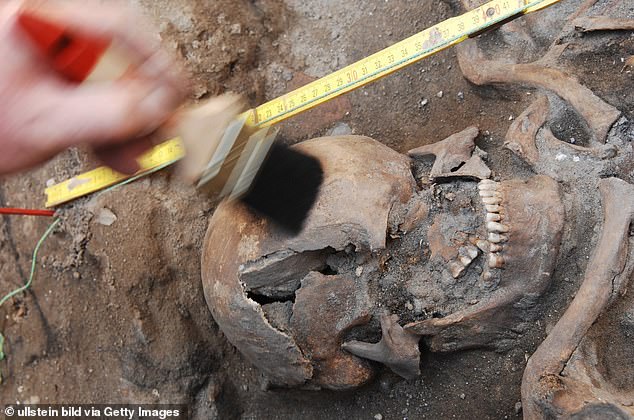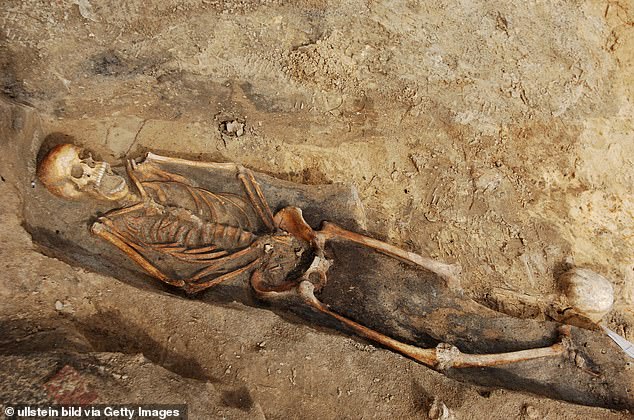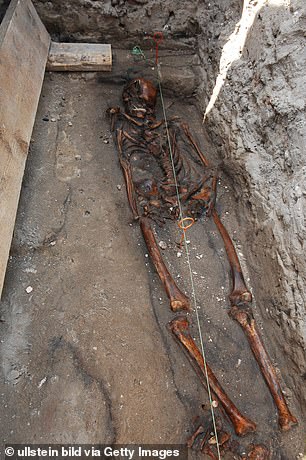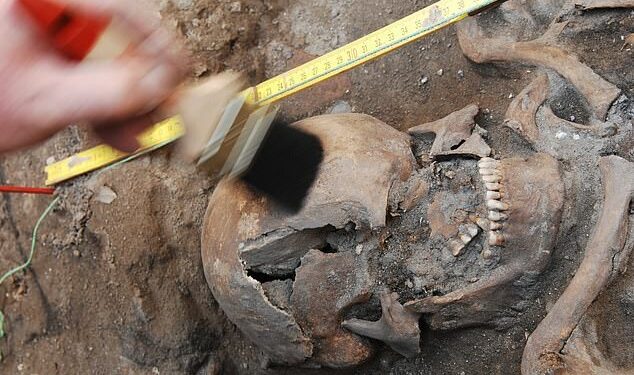A medieval cemetery discovered beneath a Berlin parking garage has shown that its early inhabitants endured harsh lives marred by conflict, sickness, and inadequate nutrition.
Almost half of the 3,700 human bones were discovered between 1047 and 1299 when the German capital was formed.
Several males remains exhibit traces of weapon damage, while the skeletons of youngsters reveal the existence of rickets, scurvy, and tuberculosis, all of which are caused by vitamin deficiencies.

One had his nose removed, while another had his teeth knocked out after being smacked across the jaw.
After examining early remnants in Petriplatz near the ancient St Peter’s Church in Colln, which had united with Berlin by the 1400s, archaeologists proposed the city’s violent start.
The bones of one youngster, called ‘The Swimmer,’ was discovered significantly disfigured, with its back arched and arms crossed, indicating the existence of tetanus in the city.
‘It can be explained if the infant was buried in cadaveric rigor, or acute spasm, with all of the muscles in the back, arms, and legs constricted,’ said Allen Archaeology’s archaeologist Natasha Powers.
‘The position is very similar to that which occurs when a person has tetanus.’

One body had hits to the skull from a serrated blade and delicate cuts to the hands, indicating that he lifted them in a desperate attempt to defend himself.
The second skeleton has slices across the jaw that have knocked out teeth, indicating that blows were delivered with great force and wounds on the forearm, meaning an effort at self-defense.
Fractures to the wrist were also discovered, implying that the man fell while being attacked.
Archaeologists believe that blows to the head pierced the third skeleton’s brain, killing him quickly. He may have been dragged from a horse based on the wounds on his ankle.

Amputees, cancer patients, and lepers dating from 1050 to the 1700s have also been discovered.
The devastation experienced by the locals can be traced back to Albert the Bear’s reign in 1157 when he notably launched crusades against the pagan Slavs to the east.
Colln and Berlin appear in historical documents for the first time in the 13th century, while archaeological evidence suggests Colln may have existed for up to a century before that.
Albert the Bear also left Berlin his bear logo, which has since appeared on the city’s coat of arms.























